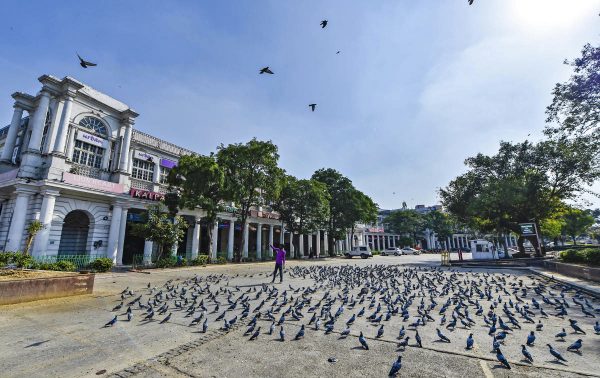
Covid-19 has attacked our respiratory systems. It has questioned our collective faith in the ability of the state to deliver in times of severe crisis. It has also made the miseries of the working class more apparent than ever. Alongside disrupting normalcy, it has choked some of the fundamental gateways of “flexibility” and “deterritorialisation”, on which globalisation is premised. It has fundamentally disrupted all sorts of flows that are vital to the integrated “fluid” networks of worker and material mobility. It has stifled easy movement and exchange. Trade and labour can no longer take the transcendence of time, space and geographical borders for granted. Covid has made the concept of “border” extremely rigid, at least for the time being.
Our perception of a border is getting redefined as local bodies are busy marking and protecting “their” zones based on their ideas of speculative safety. Staying put is desirable but prolonged physical movement is a source of massive concern—at the points of origin and destination. Any mover is a potential carrier of the invisible or asymptomatic threat. Travelling has to be contained or minimised or nullified. The movement-frenzied restless masses have been frozen into an unprecedented stagnancy, particularly during the lockdown but also soon after its phasing out. In the dying days of the lockdown, we witness newer ways to prevent movement. While the lockdown was being phased out, several stakeholders were busy erecting new walls of containment or strengthening their existing borders with the “others”, or they redrew news lines of control to keep these “others” away.
All geographical units—no matter how big or small—have strategic territories to guard. Nations are wary of movements of other nationals in and out of their land. Provinces are suspicious of people’s movement from another province, even from a neighbouring one; and even if such movement is imperative and rational for the economy, sociality and livelihood of both the provinces. Ghaziabad and Noida do not want “probable spreaders” from Delhi and vice versa. The urban imagination of the National Capital Region is on retreat. As if the potential spreaders can only come from the other side of the newly-strengthened provincial borders and contaminate the insiders. It is the psyche that personifies ideas of intruders versus inhabitants. As if the load of the perceived threat is always from the “outside”, and minimal from within the limits of one’s own territory. This in itself is nothing but a denial of the already apparent community spread.
The rationale of erecting borders flows down to the smallest administrative units. Districts, sectors, neighbourhoods, pockets, zones, housing societies, apartments—everyone is apprehensive of the “other”. Out of mass paranoia, everyone is seeking to become a sovereign unit and fortify and protect one’s borders. In pre-Covid times, these borders were literally insignificant and invisible to any urban dweller, who moved across them, whether for work or pleasure. The same border is now cropping up in prominent colours and in bold marks, creating a cartographic imagination of the pandemic. These new lines of control are acquiring neo-significance to prevent free movement.
It is as if the border-builders are conveying they have done their bit by laying out the new lines of control, imposing punishing restrictions, and making us blindly follow them without question: once these borders are erased, you will be on your own. For example, there is no point in preventing people to walk within a housing society when government has decided to run flights in full capacity. I was stuck inside a housing complex for a 21-day-quarantine which was applicable to its ten thousand residents because of just two patients, who recovered in less than a week. The unit of quarantine cannot be an entire society when there is no claim that a prolonged isolation will make us immune to the virus forever. When the gates reopen, people will come and go through the borders of the housing society and may bring and spread the infection.
Blocking cannot be a template alongside unlocking and “learning to live with the virus”. The lockdown was lifted with the purpose of returning to a new normalcy, restarting life and activities of all kinds. Quite contrary to the ethos of easing down of the largest lockdown in the world, we are getting diverted into regressive zoning habits. Instead of strengthening our safeguards, we are implementing mini- and micro-lockdowns to create maximum immobility and minimum convenience.
Is it even possible to stop such a contagious virus from spreading with our propensity for restrictive walling and zoning? If the administration bought time to strengthen its health infrastructure during the lockdown, why is it panicking and acting so insecure now? People need to cross all kinds of borders for their livelihoods, to work or even to socialise. But while unlocking, we were busy barricading and digging up roads to prevent access and flow.
If we have to live with the virus till the vaccine arrives—which is several months away—it is more sensible to fight the virus and not the perceived “outsiders” while we hold on to our zonal citizenships cards. It is bound to spread fast and infect many more. A mindless and unimaginative assertion of boundaries will not stop anything other than slightly delaying the inevitable, and creating more hurdles to return to normalcy.




